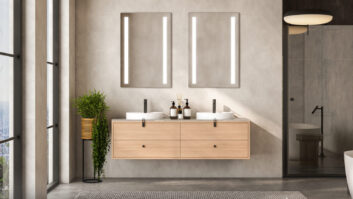NEW YORK – Smart TVs in all flavors have been front and center in the TV product development hype for a number of years, but will the fanfare behind recent introductions of new add-on streaming devices — such as Amazon’s Fire TV, the Apple TV, Roku’s HDMI Streaming Stick and Google’s Chromecast dongle — give TV purchasers a new excuse to dumb down their set purchases?
Analysts and vendors said yes and no.
The stakes for smart-TV manufacturers and retailers can be huge, given the razor-thin margins on barebones TVs, the added revenue that smart TVs can bring through residual service income, and the higher step-up margins.
The NPD Group predicted a total of 202 million Internet-capable TV devices will be found in U.S homes by 2015, a 44 percent increase from the 140 million at the start of 2013.
The Consumer Electronics Association estimated the annual number of so-called “digital media players” (set-top and streaming devices and dongles) shipped into the U.S. market rose from about 6.5 million in 2012 to 8.8 million in 2013, and that should rise to 11 million in 2014.
According to a Parks Associates study, about 14 percent of U.S. broadband households had a streaming-video media device like a Roku or Apple TV in 2013, and overall penetration of connected- TV devices in homes, including streaming players, smart TVs, video game consoles and other products, should reach 330 million annually by 2017, nearly double units shipped in 2013.
As for all-in-one smart TVs, Quixel Research’s “Fourth Quarter 2013 LCD TV Market Report” revealed that 35 percent of all LCD TVs sold had some level of smart-TV functionality; this jumped to more than 60 percent when looking at LCD TVs 40 inches and larger. Quixel’s latest forecast projects that by 2015, the number of smart TVs will increase to more than half of all LCD TVs sold and more than 80 percent of LCD TVs 40 inches and larger.
For network streaming device makers, the lowhanging fruit is represented by budget-conscious consumers looking to save $150 to $200-plus on a smart-TV purchase by buying a bare-bones set along with a “media player” for $30 to $100 to get the same or similar functionality.
But Paul Erickson, IHS senior analyst, said a potentially bigger motivator for the purchase of an add-on smart TV adapter are all the extra features they can add in the way of additional content services, features and functionality over lesser-equipped or older all-inone smart TVs that lack an upgrade path.
Erickson also pointed to the smoother interoperation between devices, in some cases, such as the smoother integration between an iOS smartphone or tablet and an Apple TV device.
NPD industry analyst and executive director Ben Arnold, agreed: “The stage is set for network content devices to do more than stream video. The Amazon Fire TV’s quad-core processor means it can take on some client-lite PC-tasks — things connected TVs and Blu-ray players can’t do. Google, Apple and Amazon, the retailers, could conceivably use their devices to make the TV a new point-of-sale for things other than content.”
The story is similar even with makers of outboard devices. Ningjun Sun, president and CEO of Sungale, the maker of a $99 well-featured Androidbased “Smart TV Box,” told TWICE that features beyond simple streaming are what give his company’s product an edge over smart TVs and set-top box challengers.
“The primary opportunity for Sungale is that all the current major TV boxes are only focused on multimedia and streaming video content,” said Sun. “We offer the same content, as well as an Internet browser, games [and] educational apps, and the app store is not limited like you will find with the other products on the market. We also offer free content without subscriptions required, such as XBMC media center, Internet TV and more.”
Jill Turcic, Quixel Research’s senior analyst and managing director, said: “We are definitely bullish on smart-TV functionality, but also believe that consumers may be reluctant to tie these capabilities to technology that is built into their TVs. … While consumers have become accustomed to upgrading technology, like smartphones, every couple of years, those same expectations don’t apply to TVs, where longer lifecycles are still required. Unlike TVs, [set-top] devices offer the flexibility to stay current on technology by upgrading every couple of years at a much lower price point.”
Turcic added, “When it comes to smart TVs, it’s a balancing act for TV makers. They have to include enough functionality to remain competitive in a headto- head comparison but not overburden the TV with costs that may be overridden by redundant features offered in stand-alone devices. On the upside, the breakout success of streaming programming like Netflix’s ‘House of Cards,’ which is among the first to be available in 4K, should bode well for TV makers since a 4K-enabled TV is needed to watch this programming at its highest resolution.
“This is an opportunity to sell higher priced TVs and could also be enough to shift buyers from `replace’ mode to ‘upgrade’ mode and prompt additional purchases. Manufacturers might be better served to focus less on smart-TV offerings and more on ensuring the absolute best TV viewing experience as consumers will likely still look to their TVs for picture quality above all else.”
Tony Favia, Sharp LED LCD TV senior product manager, also pointed out that where network content devices like Apple TV and Amazon’s Fire TV may favor content from their own-related video-on-demand services, better-integrated smart TVs, like many of Sharp’s 2014 models, offer advanced menu integration with intelligent search and recommendation tools that simplify the content selection process and present viewers with suggestions more suitable to their preferences and budgets.
Such TVs typically combine over-the-top program selection from the Internet with movies and programs available as cable and broadcast options.
Smart-TV manufacturers also argued that consumers get a better value from the all-in-one approach.
The price difference can be deceiving, they said, because connected services are often just one aspect of higher-end TVs. Usually, smart TVs also include better video processing with better picture quality and expanded features.
NPD research shows that the number of connected smart TVs was basically equal to the size of the outboarded “network content devices” in 2013, with both projected to see significant growth this year and next.
Both approaches showed similar growth in 2013, with the market mostly doubling between 2012 and 2013.
Unit sales of so-called “network content devices” have grown 78 percent in the last 12 months, according to NPD’s Retail Tracking Service, and NPD’s Connected Intelligence’s “Connected Home Forecast” estimates 23 million Internet capable households will own one of these devices by 2015.
“I think the network device market has the momentum right now — so if anything, these boxes might hinder sales of connected/smart TVs,” Arnold continued. “This is a reasonable outlook right now given the buzz in that market, the prices on the devices, and the big ecosystem companies in the space.”
As for the future of such devices, he said he expects more network device manufacturers to follow Amazon’s lead and “pack in more features and improve the user experience with predictive search and alternative interfaces.”
Meanwhile, some analysts, including Arnold, also pointed out that when it comes to upgrading a smart TV platform to meet changing standards, set-top devices offer the most affordable and practical solution.
Over time, such devices may turn into veritable home-automation hubs for home security and energy monitoring, etc., making the TV a dashboard for home control as well as home entertainment.
TAKEAWAY
Experts say the landscape for smart-TV functionality is expanding for both all-in-one TV sets and out-boarded network entertainment devices, with unit sales running about 50/50 in each sector, but where it’s headed may come down to price, content selection and upgradeability.













